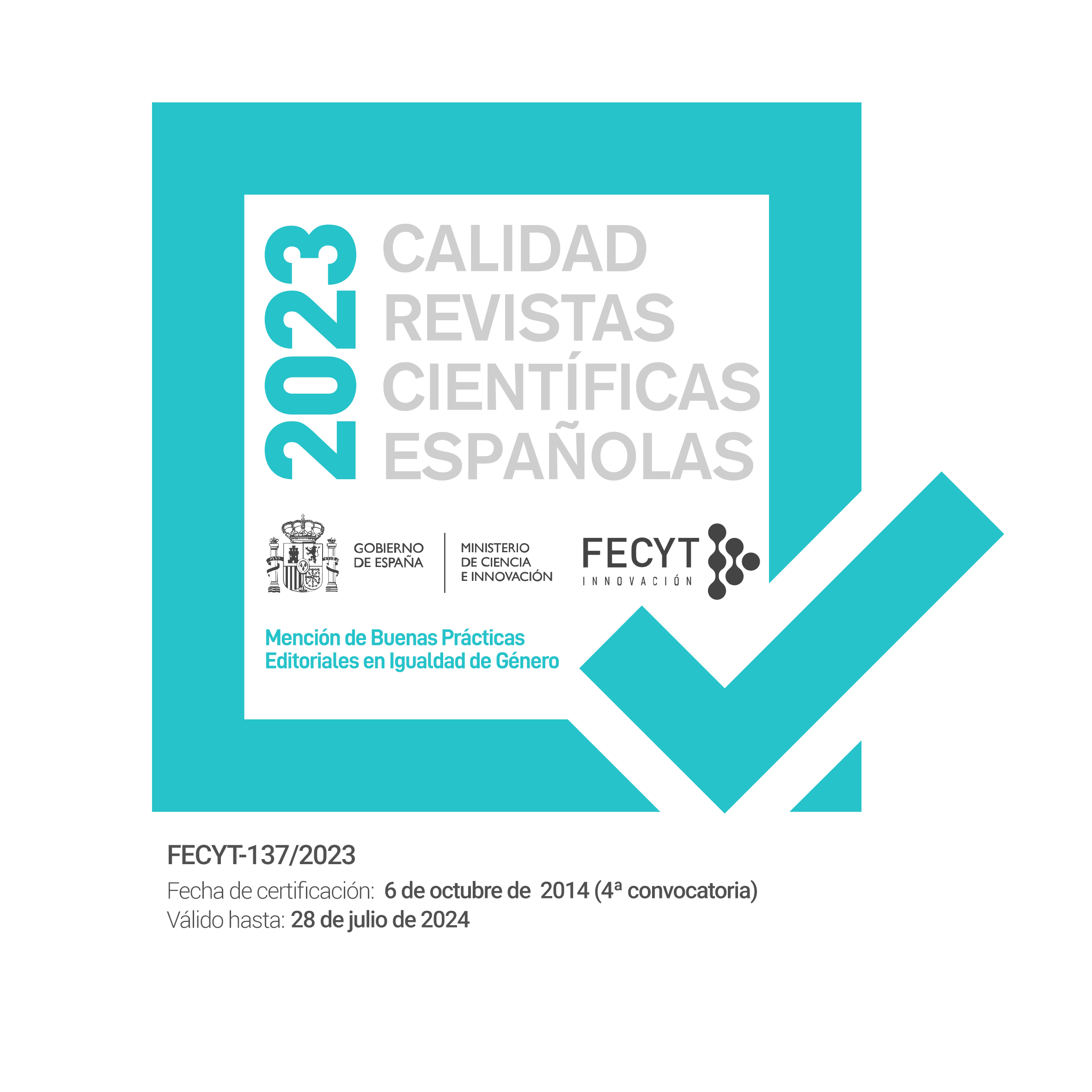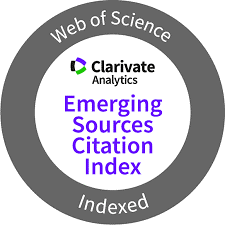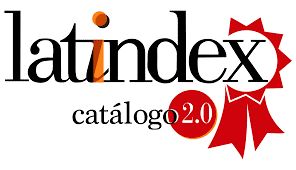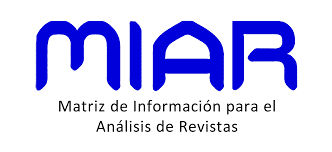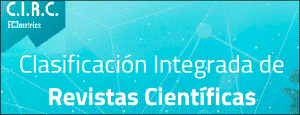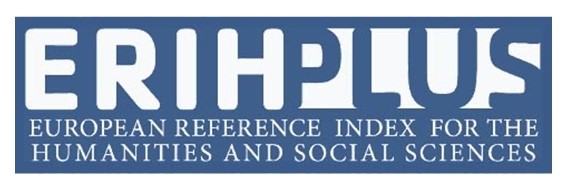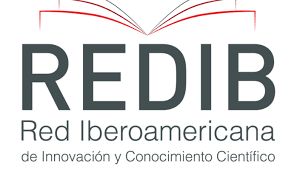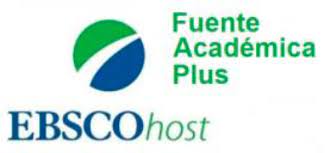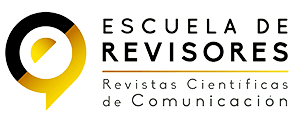Las fake news y su percepción por parte de los jóvenes españoles: el influjo de los factores sociodemográficos
DOI:
https://doi.org/10.31921/doxacom.n36a1741Palabras clave:
jóvenes, España, fake news, redes sociales, ideologíaResumen
Desde hace algo más de un lustro, las fake news se han convertido en un fenómeno global que incide de modo determinante en los flujos comunicativos mundiales. Dado que el canal prioritario a través del cual se difunden son las redes sociales, cabe pensar que los jóvenes, principales usuarios de estas aplicaciones, constituyen el colectivo más expuesto a ellas. En este trabajo se analiza, partiendo de un muestreo representativo de los individuos residentes en España de entre 15 y 24 años (n=1.068), la percepción que los jóvenes tienen de las fake news, atendiendo a la frecuencia con que las reciben, sus temáticas y fuentes más habituales y el modo en que se enfrentan a ellas, teniendo en cuenta cómo influyen en su recepción factores sociodemográficos como el sexo, la edad, el hábitat, la ideología o el nivel formativo. Entre otras constataciones, los resultados evidencian que cuanto mayor es la edad y el nivel formativo, mayores son las tasas de reconocimiento y verificación de noticias falsas; que es más habitual contrastar las informaciones entre los individuos que viven en grandes municipios; y que quienes se sitúan a la derecha del espectro ideológico verifican con menor frecuencia que el resto de jóvenes.
Descargas
Citas
Alandete, D. (2019). Fake news: la nueva arma de destrucción masiva. Barcelona: Deusto.
Allcott, H. & Gentzkow, M. (2017). Social media and fake news in the 2016 election. Journal of Economic Perspectives, 31(2), 211-236. https://doi.org/10.1257/jep.31.2.211
Anderson, M. & Jiang, J. (2018). Teens, social media & technology 2018. Pew Research Center. https://cutt.ly/0SiVdDR.
Auberry, K. (2018). Increasing students’ ability to identify fake news through information literacy education and content management systems. The Reference Librarian, 59(4), 179-187. https://doi.org/10.1080/02763877.2018.1489935
Bakir, V. & McStay, A. (2018). Fake news and the economy of emotions: Problems, causes, solutions. Digital Journalism, 6(2), 154-175. https://doi.org/10.1080/21670811.2017.1345645
Bakshy, E., Messing, S. & Adamic, L. (2015). Exposure to ideologically diverse news and opinion on Facebook. Science, 348(6.239), 1.130-1.132. https://doi.org/10.1126/science.aaa1160
Baptista, J. P. & Gradim, A. (2022). A working definition of fake news. Encyclopedia, 2, 632-645. https://doi.org/10.3390/encyclopedia2010043
Baptista, J. P., Rodrigues, E., Gradim, A. & Piñeiro-Naval, V. (2021). Partidismo: ¿el verdadero aliado de las fake news? Un análisis comparativo del efecto sobre la creencia y la divulgación. Revista Latina de Comunicación Social, (79), 23-47. https://doi.org/10.4185/RLCS-2021-1509
Bärtl, M. (2018). YouTube channels, uploads and views. A statistical analysis of the past 10 years. Convergence, 24(1), 16-32. https://doi.org/10.1177/1354856517736979
Bastick, Z. (2021). Would you notice if fake news changed your behavior? An experiment on the unconscious effects of disinformation. Computers in Human Behavior, (116), 106633. https://doi.org/10.1016/j.chb.2020.106633
Bastos, M. T. & Mercea, D. (2017). The Brexit botnet and user-generated hyperpartisan news. Social Science Computer Review, 37(1), 38-54. https://doi.org/10.1177/0894439317734157
Blanco, D., Amores, J. y Sánchez, P. (2021). Citizen perceptions of fake news in Spain: Socioeconomic, demographic, and ideological differences. Publications, 9(35), 87-100. https://doi.org/10.3390/publications9030035
Bosworth, K. (2019). The people know best: Situating the counterexpertise of populist pipeline opposition movements. Annals of the American Association of Geographers, 109(2), 581-592. https://doi.org/10.1080/24694452.2018.1494538
Bovet, A. & Makse, H. (2019). Influence of fake news in Twitter during the 2016 US presidential election. Nature Communications, 10(7). https://cutt.ly/ryiBxnH.
Brennen, J., Simon, F., Howard, P. & Nielsen, R. (2020). Types, source, and claims of COVID-19 misinformation. Reuters Institute. https://cutt.ly/Nt7wNEX.
Canavilhas, J., Colussi, J. & Moura, Z. B. (2019). Desinformación en las elecciones presidenciales 2018 en Brasil: un análisis de los grupos familiares en WhatsApp. El Profesional de la Información, 28(5), e280503. https://doi.org/10.3145/epi.2019.sep03
Carballo, W. & Marroquin, A. (2020). Salvadoreños en tiempos digitales Media literacy and news consumption among young Salvadorans in digital times. Revista Cubana de Información y Comunicación, (9), 22–33.
Casero-Ripollés, A. (2012). Más allá de los diarios: el consumo de noticias de los jóvenes en la era digital. Comunicar, (39), 151-158. https://doi.org/10.3916/C39-2012-0305
Catalina, B., Sousa, J. P. & Cristina, L. C. (2019). Consumo de noticias y percepción de fake news entre estudiantes de Comunicación de Brasil, España y Portugal. Revista de Comunicación, 18(2), 93-115. https://doi.org/10.26441/RC18.2-2019-A5
Catalina, B., Vozmediano, M. M. & García, A. (2017). Los jóvenes universitarios y sus pautas de consumo y difusión de noticias según la tendencia ideológica. Fonseca, Journal of Communication, (15), 57-73. http://dx.doi.org/10.14201/fjc2017155773
Cebrián, D. (2019). Identificación de noticias falsas sobre ciencia y tecnología por estudiantes del grado de Primaria. Píxel-Bit. Revista de Medios y Educación, (55), 23-36. https://doi.org/10.12795/pixelbit.2019.i55.02
Center for Internet Studies and Digital Life (2021). Digital News Report.es. https://cutt.ly/5Siy7AJ.
Children’s Commissioner (2017). Growing up digital. A report of the growing up digital taskforce. https://cutt.ly/0SiVRTx.
Comisión Europea (2022). Eurobarómetro Standard 96. Opinión pública en la Unión Europea. https://cutt.ly/3GAkK5L.
Cunningham, S. & Craig, D. (2017). Being ‘really real’ on YouTube: authenticity, community and brand culture in social media entertainment. Media International Australia, 164(1), 71-81. https://doi.org/10.1177/1329878X17709098
De Vicente, A. M., Bañares, A. B. & Sierra, J. (2021). Young Spanish adults and disinformation: Do they identify and spread fake news and are they literate in it? Publications, 9(1), 1-16. https://doi.org/10.3390/publications9010002
Del Fresno-García, M. (2019). Desórdenes informativos: Sobreexpuestos e infrainformados en la era de la posverdad. El Profesional de la Información, 28(3), 1-11. https://doi.org/10.3145/epi.2019.may.02
Dumitru, E.-A. (2020). Testing children and adolescents’ ability to identify fake news: a combined design of quasi-experiment and group discussions. Societies, 10(71). https://doi.org/10.3390/soc10030071
Férdeline, A. (2021). Youth and the news in five charts. Centre for International Media Assistance. https://n9.cl/ohili
Figueira, J. & Santos, S. (2019). Percepción de las noticias falsas en universitarios de Portugal: análisis de su consumo y actitudes. El Profesional de La Información, 28(3), 1-17. https://doi.org/10.3145/epi.2019.may.15
Fletcher, R., Schifferes, S. & Thurman, N. (2020). Building the ‘Truth-meter’: Training algorithms to help journalists assess the credibility of social media sources. Convergence, 26(1), 19-34. https://doi.org/10.1177/1354856517714955
Franceschi, J. & Pareschi, L. (2022). Spreading of fake news, competence, and learning: kinetic modeling and numerical approximation. Philosophical Transactions of the Royal Society A, 380. https://doi.org/10.1098/rsta.2021.0159
García, N., Sanjuán, Y. & Maza, F. J. (2021). Actitud frente a las fake news entre jóvenes universitarios. Revista de Jóvenes Investigadores Ad Valorem, 4(2), 82-102. https://doi.org/10.32997/RJIA-vol.4-num.2-2021-3702
García-Marín, D. & Salvet-Martinrey, G. (2022). Tendencias en la producción científica sobre desinformación en España. Revisión sistematizada de la literatura (2016-2021). AdComunica, (23), 23-50. https://doi.org/10.6035/adcomunica.6045
Gómez-Calderón, B.; Córdoba-Cabús, A. & Méndez-Nieto. A. (2020). Jóvenes y fake news. Un análisis sociodemográfico aplicado al caso andaluz. I/C. Revista Científica de Comunicación e Información, (17), 481-504. https://n9.cl/4fod9.
Gorman, S. E. & Gorman, J. M. (2016). Denying to the grave: Why we ignore the facts that will save us. Nueva York: Oxford University Press.
Gottfried, J. & Shearer, E. (2017). News use across social media platforms. Pew Research Center. https://pewrsr.ch/2A2orUT.
Grice, A. (2017). Fake news handed Brexiteers the referendum –and now they have no idea what they’re doing. Independent (18-02-2017). https://ind.pn/2OJoVpU.
Hargittai, E., Fullerton, L., Menchen-Trevino, E. & Thomas, K.-Y. (2010). Trust online: Young adults’ evaluation of web content. International Journal of Communication, (4), 468-494.
Herrero, P., Conde, J. & Reyes, S. (2020). Teens’ motivations to spread fake news on WhatsApp. Social Media + Society, julio-septiembre, 1-14. https://doi.org/10.1177/2056305120942879
Herrero, P., Conde, J., Tapia, A. & Varona, D. (2019). The credibility of online news: an evaluation of the information by university students. Cultura y Educación, 31(2), 407-435. https://doi.org/10.1080/11356405.2019.1601937
Himma-Kadakas, M., Rajavee, A., Orgmets, M. L., Eensaar, L. & Kõuts-Klemm, R. (2018). The food chain of YouTubers: engaging audiences with formats and genres. Observatorio (OBS*), special issue, 54-75. https://doi.org/10.15847/obsOBS0001385
Ho, S., Goh, T. J. & Leung, Y. W. (2022). Let’s nab fake science news: Predicting scientists’ support for interventions using the influence of presumed media influence model. Journalism, 23(4), 910-928. https://doi.org/10.1177/1464884920937488
Imaduwage, S., Kumara, P. N. & Samaraweera, J. (2022). Importance of user representation in propagation network-based fake news detection: A critical review and potential improvements. 2022 2nd International Conference on Advanced Research in Computing (ICARC), 90-95. https://doi.org/10.1109/ICARC54489.2022.9754103
INCIBE (2019). Protección del menor ante las fake news [Protection of minors against fake news]. Mundo Digital. https://cutt.ly/GSiMy3d.
INE (2022). Demografía y población. https://cutt.ly/myi1sWu.
Kahne, J. & Bowyer, B. (2017). Educating for democracy in a partisan age: Confronting the challenges of motivated reasoning and misinformation. American Educational Research Journal, 54(1), 3-34. https://doi.org/10.3102/0002831216679817
Kapantai, E., Christopoulou, A., Berberidis, C. & Peristeras, V. (2021). A systematic literature review on disinformation: Toward a unified taxonomical frameword. New Media & Society, 23(5), 1.301-1.326. https://doi.org/10.1177/1461444820959296
Kappes, A., Harvey, A. H., Lohrenz, T., Montague, P. & Sharot, T. (2020). Confirmation bias in the utilization of others’ opinion strength. Nature Neuroscience, 23(11), 130-137. https://doi.org/10.1038/s41593-019-0549-2
Kaufman, C. (2021): Civil education in a fake news era: Lessons for the methods classroom. Journal of Political Science Education, 17(2), 326-331. https://doi.org/10.1080/15512169.2020.1764366
Lazer, D. M., Baum, M. A., Benkler, Y., Berinsky, A., Greenhill, K. M., Menczer, F. & Zittrain, J. L. (2018). The science of fake news. Science, 359(6.380), 1.094-1.096.
Leeder, C. (2019). How college students evaluate and share “fake news” stories. Library and Information Science Research, (41), 100967. https://doi.org/10.1016/j.lisr.2019.100967
Leu, D. J., Reinking, D., Carter, A., Castek, J., Coiro, J., Henry, L.A. & Zawilinski, L. (2007). Defining online reading comprehension: Using think aloud verbal protocols to refine a preliminary model of Internet reading comprehension processes. American Educational Research Association. http://docs.google.com/Doc?id=dcbjhrtq_10djqrhz.
Loos, E., Ivan, L. & Leu, D. (2018). “Save the Pacific Northwest tree octopus”: A hoax revisited. Or: How vulnerable are school children to fake news? Information and Learning Sciences, (119), 514–528.
López-Martín, Á. & Córdoba-Cabús, A. (2021). Fake news y desinformación como herramientas desacreditadoras: Estructura y difusión de los bulos sobre feminismo. En L. Vega Caro y A. Vico Bosch (Coords.), Igualdad y calidad educativa: Oportunidades y desafíos de la enseñanza (pp. 461-481). Madrid: Dykinson.
López-Martín, Á., Gómez-Calderón, B. & Córdoba-Cabús, A. (2021). Desinformación y verificación de datos. El caso de los bulos sobre la vacunación contra la Covid-19 en España. RISTI-Revista Ibérica de Sistemas e Tecnologias de Informaçao, (E45), 431-443. https://cutt.ly/iGAlQyO.
Magallón, R. (2018). Nuevos formatos de verificación. El caso de Maldito Bulo en Twitter. Sphera Publica, 1(18), 41-65.
Magallón, R. (2019a). Unfaking news. Madrid: Pirámide.
Magallón, R. (2019b). Desinformación en campaña electoral. Telos (15-05-2019). https://cutt.ly/byi1M5v.
Marchi, R (2012). With Facebook, blogs, and fake news, teens reject journalistic “objectivity.” Journal of Communication Inquiry, 36(3), 246-262. https://doi.org/10.1177/0196859912458700
Martín-Herrera, I. & Micaletto, J. P. (2021). Opiniones y actitudes de los estudiantes universitarios de Comunicación ante las fake news. Diagnóstico en un ecosistema docente. Comunicación y Hombre, (17), 193–206.
Masip, P., Almenar, E., Ramspot, S. A. & Capilla, P. (2020). El consumo de información durante el confinamiento por el coronavirus: medios, desinformación y memes. Digilab. https://cutt.ly/jyi0w0q.
McGrew, S., Breakstone, J., Ortega, T., Smith, M. D. & Wineburg, S. (2018). Can students evaluate online sources? Learning from assessments of civic online reasoning. Theory & Research in Social Education, 46(2), 165-193. https://doi.org/10.1080/00933104.2017.1416320
McGrew, S., Ortega, T., Breakstone, J. & Wineburg, S. (2017). The challenge that’s bigger than fake news: Civic reasoning in a social media environment. American Educator, 4(3), 4-9.
Mendiguren, T., Pérez, J. & Meso, K. (2020). Actitudes ante las fake news: Estudio del caso de los estudiantes de la Universidad del País Vasco. Revista de Comunicación, 19(1), 171-184. https://doi.org/10.26441/RC19.1-2020-A10
Mihailidis, P. & Samantha, V. (2017). Spreadable spectacle in digital culture: Civic expression, fake news, and the role of media literacies in “post-fact” society. American Behavioral Scientist, 61(4), 441-454. https://doi.org/10.1177/0002764217701217
Musgrove, A., Powers, J., Rebar, L. & Musgrove, G. (2018). Real or fake? Resources for teaching college students how to identify fake news. College & Undergraduate Libraries, 25 (3), 243-260. https://doi.org/10.1080/10691316.2018.1480444
Newman, N., Dutton, W.H. & Blank, G. (2012). Social media in the changing ecology of news: The fourth and fifth estate in Britain. International Journal of Internet Science, 7(1). https://bit.ly/1FmAafU.
Newman, E. & Zhang, L. (2021). Truthiness: How non-probative photos shape belief. En R. Greinfeneder, M. Jaffé, E. Newman & N. Schwarz (Eds.), The psychology of fake news. Accepting, sharing and correcting misinformation (pp. 90-114). Nueva York: Routledge.
Nielsen, R. K. & Schrøder, K. C. (2014). The relative importance of social media for accessing, finding, and engaging with news. Digital Journalism, 2(4), 472-489. https://doi.org/10.1080/21670811.2013.872420
Oliveira, J. & Rossi, M. (2018). WhatsApp, el elemento distorsionador de la campaña en Brasil. El País (07-10-2018). https://bit.ly/2QxPleA.
Paniagua, F., Seoane, F. & Magallón, R. (2020). Anatomía del bulo electoral: la desinformación política durante la campaña del 28-A en España. Revista CIDOB d’Afers Internacionals, (124), 123-145. https://doi.org/10.24241/rcai.2020.124.1.123
Paskin, D. (2018). Real or fake news: Who knows? The Journal of Social Media in Society, 7(2), 252-273.
Pérez, A., Barón, G. & Rubio, J. (2021). Mapeo del consumo de medios en los jóvenes: redes sociales, fake news y confianza en tiempos de pandemia. index.comunicación, 11(2), 187-208.
Pérez, A., Pedrero, L. M., Rubio, J. & Jiménez, C. (2021). Fake news reaching young people on social networks: Distrust challenging media literacy. Publications, 9(2), 24. https://doi.org/10.3390/publications9020024
Pérez, A. & Pedrero, L. M. (2021). Retos del periodismo frente a las redes sociales, las fake news y la desconfianza de la generación Z. Revista Latina de Comunicación Social, (79), 67-85. https://www.doi.org/10.4185/RLCS-2021-1519
Pérez-Curiel, C. & Velasco, A. M. (2020). Impacto del discurso político en la difusión de bulos sobre Covid-19. Influencia de la desinformación en públicos y medios. Revista Latina de Comunicación Social, (78), 86-119. https://doi.org/10.4185/RLCS-2020-1469
Pilgrim, J., Vasinda, S., Bledsoe, C. & Martinez, E (2019). Critical thinking is critical: Octopuses, online sources, and reliability reasoning. The Reading Teacher, 73(1), 85-93.
Ranieri, M., Di Stasio, M. & Bruni, I. (2018). Insegnare e apprendere sulle fake news. Uno studio esplorativo in contesto universitario. Media Education, (9), 94-111.
Raponi, S., Khalifa, Z., Oligeri, G. & Di Pietro, R. (2022). Fake news propagation: a review of epidemic models, datasets and insights. ACM Transactions on the Web. https://doi.org/10.1145/3522756 (En prensa).
Resende, G., Melo, P., Sousa, H., Messias, J., Vasconcelos, M., Almeida, J. & Benvenuto, F. (2019). (Mis)Information dissemination in WhatsApp: Gathering, analyzing and countermeasures. En VV. AA., The World Wide Web Conference (pp. 818-828). ACM.
Salaverría, R., Buslón, N., López-Pan, F., León, B., López-Goñi, I. & Erviti, M. C. (2020). Desinformación en tiempos de pandemia: tipología de los bulos sobre la Covid-19. El Profesional de la Información, 29(3), e290315. https://doi.org/10.3145/epi.2020.may.15
Sánchez-García, F. J. (2021). Educar la mirada. El discurso informativo de las fake news en el currículo de Secundaria y Bachillerato. Contextos Educativos, (27), 153-167. https://doi.org/10.18172/con.4865
Schwarz, N. & Jalbert, M. (2021). When (fake) news feels true: Intuitions of truth and the acceptance and correction of misinformation. En R. Greinfeneder, M. Jaffé, E. Newman & N. Schwarz (Eds.), The psychology of fake news. Accepting, sharing and correcting misinformation (pp. 73-89). Nueva York: Routledge.
Smith, A. & Anderson, M. (2018). Social media use in 2018. Pew Research Center. https://cutt.ly/LSiBi4V.
Sobral, F. & De Morais, N. (2020). La cultura de las información falsa en la red: la perspectiva de un grupo de estudiantes en Portugal. Revista Prisma Social, (29), 172-194.
Sveningsson, M. (2015). ‘It’s only a pastime, really’: Young people’s experiences of social media as a source of news about public affairs. Social Media + Society, 1(2), 1-11.
Tandoc, E. C., Jenkins, J. & Craft, S. (2019). Fake news as a critical incident in journalism. Journalism Practice, 13(6), 673-689. https://doi.org/10.1080/17512786.2018.1562958
Tandoc, E. C., Thomas, R. J. & Bishop, L. (2021). What is (fake) news? Analyzing news values (and more) in fake stories. Media and Communication, 9(1), 110-119. https://doi.org/10.17645/mac.v9i1.3331
Tejedor, S., Portalés, M., Carniel, R., & Cervi, L. (2021). Journalism students and information consumption in the era of fake news. Media and Communication, 9(1), 338-350. https://doi.org/10.17645/MAC.V9I1.3516
Thurman, N. & Fletcher, R. (2017). Has digital distribution rejuvenated readership? Journalism Studies, 20(4), 542-562. https://doi.org/10.1080/1461670X.2017.1397532
Valverde, J., González, A. & Acevedo, J. (2022). Disinformation and multiliteracy: A systematic review of the literature. Comunicar, 70(XXX), 93-105. https://doi.org/10.3916/C70-2022-08
Van-der-Linden, S. & Roozenbeek, J. (2021). Psychological inoculation against fake news. En R. Greinfeneder, M. Jaffé, E. Newman & N. Schwarz (Eds.), The psychology of fake news. Accepting, sharing and correcting misinformation (pp. 147-169). Nueva York: Routledge.
Vihalemm, P. & Kõuts-Klemm, R. (2017). Changing media use: coming of internet era. En Vihalemm, P., Lauristin, M., Kalmus, V., Vihalemm, T. (eds.). Estonian society in an accelerating time. (pp. 251-273). Tartu: Tartu University Press.
Vosoughi, S., Roy, D. y Aral, S. (2018). The spread of true and false news online. Science, 359(6.380), 1.146-1.151
Vraga, E., Bode, L. & Tully, M. (2020). Creating news literacy messages to enhance expert corrections of misinformation on Twitter. Communication Research, 49(2), 245-267. https://doi.org/10.1177/0093650219898094
Wardle, C. & Derakhshan, H. (2017). Information disorder. Toward an interdisciplinary framework for research and policymaking. Estrasburgo: Consejo de Europa.
Wineburg, S. & McGrew, S. (2016). Why students can’t google their way to the truth: Fact-checkers and students approach websites differently. Education Week (01-11-2016). https://cutt.ly/pGGowN4
Wineburg, S., McGrew, S., Breakstone, J. & Ortega, T. (2016). Evaluating information: The cornerstone of civic online reasoning. Stanford Digital Repository. https://n9.cl/ieuyo.
Yuste, B. (2015). Las nuevas formas de consumir información de los jóvenes. Revista de Estudios de Juventud, (108), 179-191. https://n9.cl/jqlo
Zhu, Y. & Procter, R. (2015). Use of blogs, Twitter and Facebook by UK PhD students for scholarly communication. Observatorio (OBS*), 9(2), 29-46. https://doi.org/10.15847/obsOBS922015842
Zimdars, M. & McLeod, K. (2020). Fake news and misinformation in the digital age. Cambridge: The MIT Press.
Descargas
Publicado
Cómo citar
Número
Sección
Licencia
Derechos de autor 2023 Bernardo Gómez Calderón, Alba Córdoba-Cabús, Álvaro López-Martín

Esta obra está bajo una licencia internacional Creative Commons Atribución-NoComercial 4.0.




